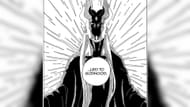The fascinating universe of Boruto has brought forth a diverse array of intriguing villains, each possessing distinctive abilities and captivating backstories. These mysterious opponents seem to have been subtly foreshadowed even in the original Naruto series, hinting at their eventual emergence.
Masashi Kishimoto, the creator of the Naruto franchise, is known for his exceptional skill in masterfully weaving clues and foreshadowing future events and characters. This intricate storytelling approach keeps fans eagerly engaged, continuously unraveling the intricate storyline of the Naruto world.
Boruto: Kakuzu's foreshadowing of the 4 Shinju of Shibai Otsutsuki

The latest antagonists of Boruto: Two Blue Vortex exhibit striking similarities to a character from the Naruto series, Kakuzu. This Akatsuki member possessed an exceptional ability, allowing him to survive by utilizing multiple hearts. Remarkably, this trait mirrors the attributes of Shibai Otsutsuki, a pivotal adversary in Boruto.
As per Amado's insights, Shibai evolved to possess divine abilities, termed Shinjutsus, specifically the "4 Shinjutsus of Shibai Otsutsuki." This intriguing parallel between Kakuzu's unique power and Shibai's advanced Shinjutsus suggests a potential connection between the villains across both series. The 4 Shinjus are Jura, Hidari, Bug, and Matsuri.
Boruto: All you need to know about the Shinju

The Divine Tree or Shinju is an ancient legend and is a powerful entity holds immense chakra energy and spiritual qualities. While its roots remain hidden in mystery, it is honored as the source of all chakra.
In the Boruto series, Shibai Otsutsuki emerges with a puzzling connection to the Shinju, becoming central to the story's plot. Shibai plays a key role in the Shinju's manifestation and the rise of its formidable clones - Jura, Hidari, Matsuri, and Bug.

The Jura clone, with speculated inspirations from Jigen or Isshiki Otsutsuki, has set his sights on consuming Naruto Uzumaki, presenting a significant threat to the Seventh Hokage. Matsuri, bearing similarities to Moegi Kazamatsuri, targets Konohamaru Sarutobi, creating a personal connection that heightens the conflict.
Hidari, linked to Sarada Uchiha through her father Sasuke Uchiha, emerges as a formidable opponent, directly targeting Sarada herself. Finally, Bug's clone, with a loose connection to Eida, whimsically decides to consume her, adding an element of unpredictability to the narrative.

In the unfolding story, each clone bears distinct traits and targets, escalating the stakes for the protagonists. This promises intense clashes and strategic battles. The parallels between these clones and pivotal figures lend emotional depth to the conflict, heightening the suspense and drama. Moreover, the Shinju's existence and connection to Shibai Otsutsuki hint at larger cosmic influences at work, sowing seeds of intrigue.
The true meaning and goal of the Shinju and its copies remain a puzzle, sparking ideas and excitement among followers. As events progress, uncovering their importance could shift the story's direction, giving a fresh understanding of the complex Boruto mythology. With these mighty foes' presence, Boruto embarks on an exciting path, exploring fate, sacrifice, and the ongoing clash between light and dark.
Final thoughts

The foreshadowing of villains in Boruto: Two Blue Vortex ties back to a detail from the original Naruto series. Kakuzu, an antagonist from Naruto Shippuden, who possessed a unique ability to use multiple hearts to power his strength. This skill foreshadowed the arrival of Shibai Otsutsuki, who has four powerful Shinjutsus.
The connection between these characters showcases Masashi Kishimoto's talent for laying the groundwork for future plot developments. As the story continues, witnessing how these enigmatic villains unfold should captivate fans. Kishimoto's long-term planning highlights his storytelling mastery and the enduring appeal of the Naruto franchise.
